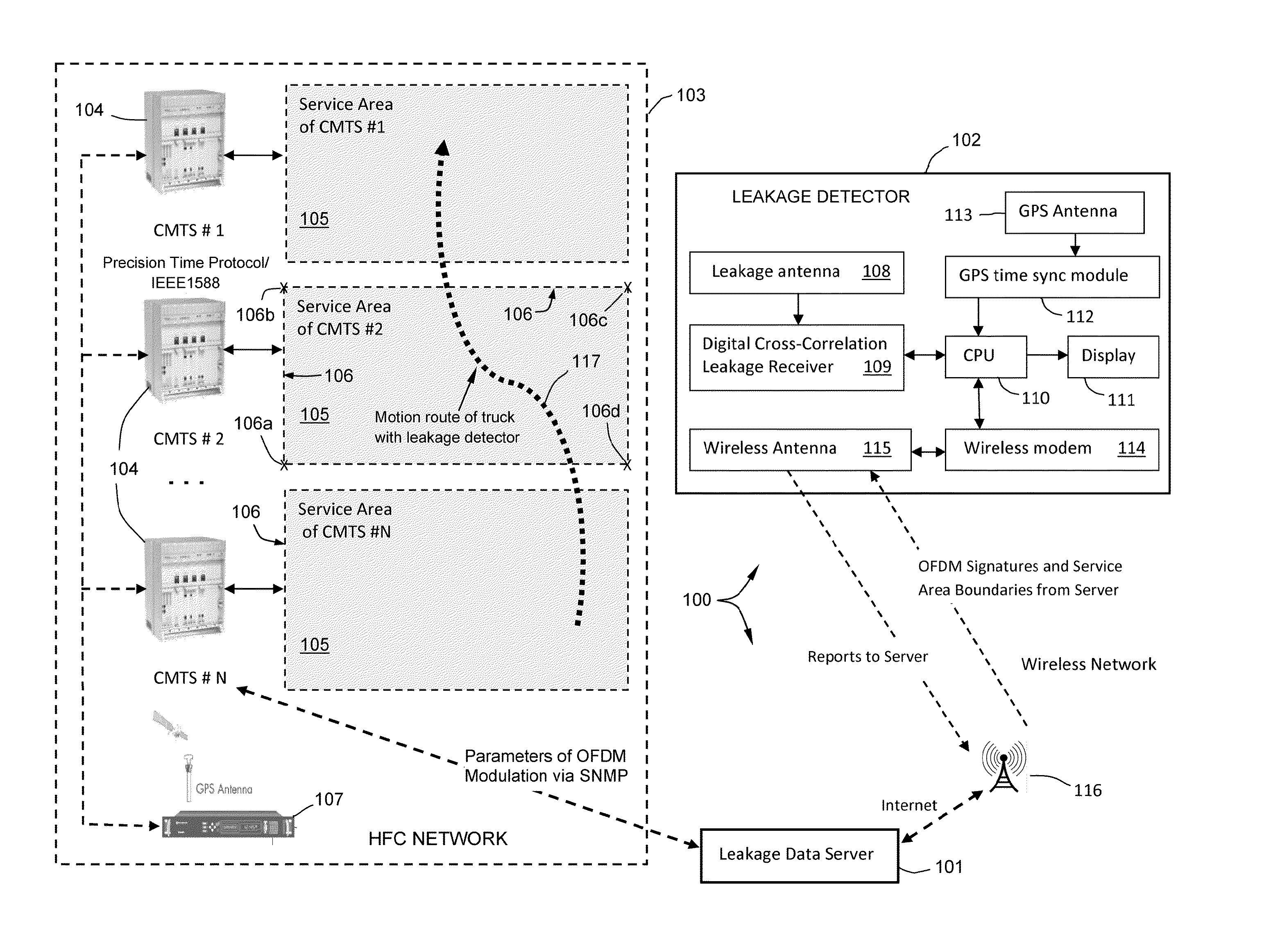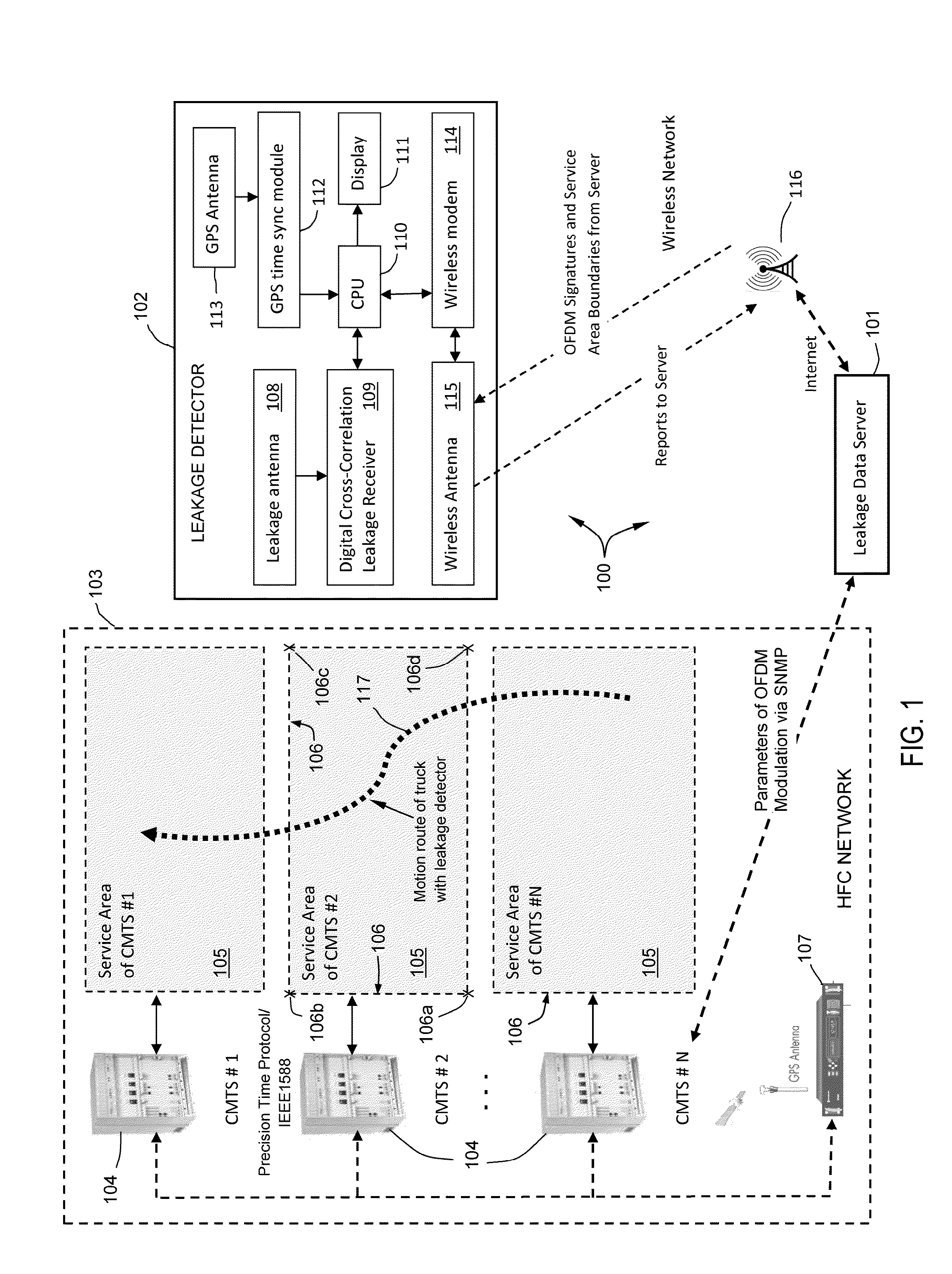Detecting Leakage of OFDM Signals from an HFC Network
a technology of hybrid fibercoax and signal leakage detection, applied in data switching networks, frequency-division multiplexes, television systems, etc., can solve problems such as difficulty in detection, leakage detection in modern hfc networks with ccap architecture, and noise of ofdm signals
- Summary
- Abstract
- Description
- Claims
- Application Information
AI Technical Summary
Benefits of technology
Problems solved by technology
Method used
Image
Examples
Embodiment Construction
[0054]The embodiment claimed herein is the CPS embodiment introduced and summarized above. The disclosure of the CPS embodiment is primarily found in FIGS. 1-2, 16, 18-19, 20A-20C, 21-24, &25A-25B and in the description referring to these figures. FIGS. 1-17 and their accompanying description primarily concern a cross-correlation detection embodiment, which is claimed in co-pending application Ser. No. 14 / 855,643, filed Sep. 16, 2015, naming the same inventor. FIGS. 1-17 (especially FIGS. 1 & 16) are presented here to aid in the disclosure and understanding of the CPS embodiment and provide background to the claimed invention. In the CPS embodiment, the signature (“CPS signature”) is different from the signature of the cross-correlation detection embodiment. One difference is the absence of reference samples in the CPS signature. In the CPS embodiment, reference samples are not cross-correlated with a detected leakage signal. Rather, the CPS signature contains information used for (...
PUM
 Login to View More
Login to View More Abstract
Description
Claims
Application Information
 Login to View More
Login to View More - R&D
- Intellectual Property
- Life Sciences
- Materials
- Tech Scout
- Unparalleled Data Quality
- Higher Quality Content
- 60% Fewer Hallucinations
Browse by: Latest US Patents, China's latest patents, Technical Efficacy Thesaurus, Application Domain, Technology Topic, Popular Technical Reports.
© 2025 PatSnap. All rights reserved.Legal|Privacy policy|Modern Slavery Act Transparency Statement|Sitemap|About US| Contact US: help@patsnap.com



